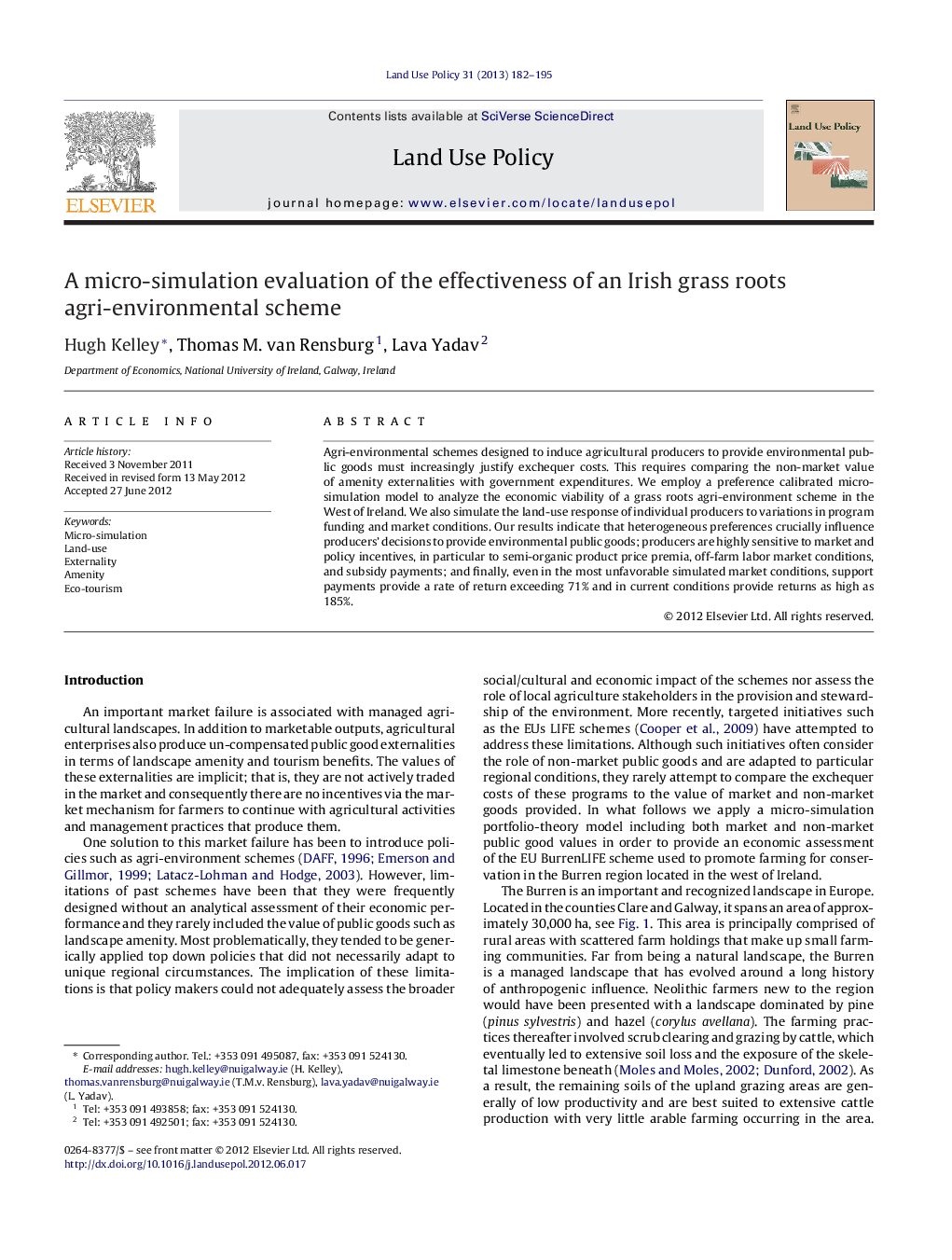| Article ID | Journal | Published Year | Pages | File Type |
|---|---|---|---|---|
| 93076 | Land Use Policy | 2013 | 14 Pages |
Agri-environmental schemes designed to induce agricultural producers to provide environmental public goods must increasingly justify exchequer costs. This requires comparing the non-market value of amenity externalities with government expenditures. We employ a preference calibrated micro-simulation model to analyze the economic viability of a grass roots agri-environment scheme in the West of Ireland. We also simulate the land-use response of individual producers to variations in program funding and market conditions. Our results indicate that heterogeneous preferences crucially influence producers’ decisions to provide environmental public goods; producers are highly sensitive to market and policy incentives, in particular to semi-organic product price premia, off-farm labor market conditions, and subsidy payments; and finally, even in the most unfavorable simulated market conditions, support payments provide a rate of return exceeding 71% and in current conditions provide returns as high as 185%.
► We model 20 farms in the Irish Burren area whose farming practices provide uncompensated amenity externalities. ► We simulate the land-use response of these producers to variations in program funding and market conditions. ► Our results indicate that heterogeneous preferences influence producers’ decisions to provide public good amenities. ► Producers are most sensitive to semi-organic product price premia, off-farm labor market conditions, and subsidy payments. ► Government support payments provide a societal rate of return exceeding 71% and may be as high as 185%.
